What are accommodations in an IEP?
Accommodations help to assist students to complete tasks as peers. Accommodations help to level the playing field so that all students are able to complete activities. Accommodations for occupational therapy can help to support a student to access their curriculum related to fine motor, visual motor, visual perceptual skills and sensory processing.
What are some occupational therapy classroom accommodations that can be written into IEPS?
Just as a reminder, accommodations are a team decision and need to be individualized for the student. You may need to take data on the effectiveness of the accommodation. This list is not meant to replace therapeutic or medical knowledge or advice. This is purely educational in nature.
Adapted paper (you will need to specify the specific kind based on individual needs of student): Adapted paper can be used to help support legibility of student’s writing. Check out this resource that has over 250 pages of adapted paper! Types of paper: Highlight paper (to help with letter size), Green / red lines (to show students where to go and stop for margins), 3 lined paper, graph paper (to help with spacing), box paper (to help with space) and more.
Adapted scissors (you will need to specify the specific kind based on individual needs of student): Adapted scissors are used for students who have difficulty with visual motor skills. Loop or spring loaded scissors are a good choice for students who have difficulty with opening and closing the scissors. One handed scissors are useful for students who may be missing digits or do not have the grasp to hold scissors.
Looking for a way to TRACK accommodations? Check out my ACCOMMODATION tracker, here!
Sign up for my VIP email list to have this FREE LIST of these accommodations in a PDF format!
Adapted utensils (you will need to specify the specific kind based on individual needs of student): Some students may have difficulty with holding utensils or using utensils.
Allowed to stand to complete work: For students who have difficulty sitting in their seat and need to move, students can stand to work. This helps with self regulation and attention for some students.
Alphabet model on desk or notebooks: This is a way to support legibility. Student’s can use an alphabet model to check their work. Check out this resource that includes already made alphabet models.
Baseball hat: A baseball hat can be beneficial for students who have difficulty with filtering out the environment. By wearing a baseball hat, this can help a student stay focused on what is in front of them.
Body sock: A body sock is a good accommodation for students who nee proprioceptive input. Work with your OT to determine a wearing schedule.
Chewy or chewable water bottle: A chewy or chewable water bottle is a great tool to help students who seek proprioceptive input through chewing or need to chew throughout the day. Gum is another option but I typically do not like to give gum to students because of the potential for cavities.
Compression vest: A compression vest may be helpful for students who need proprioceptive input to help with self regulation. Always work with your OT to determine schedule.
Copy of notes: Students who have difficulty with handwriting speed or legibility may benefit from a copy of notes. You may even be able to have students take a picture of the teacher’s notes while they are writing. If teachers are writing on a Smartboard or computer, they can even take screenshots of notes to give to the student.
Fidgets: Fidgets can be a great way to help students who need tactile input to help with self regulation.
Flexible seating (you may need to specify the specific kind based on the individual needs of the student): Flexible seating allows a student to sit in multiple different ways throughout the day. This helps with self-regulation and to keep a student’s attention. Examples include: Move ‘n sit cushion, exercise ball, beanbag, or gamers chair. This is an ALREADY made visual that includes visuals for flexible seating.
Headbands: Headbands can be a great tool for students who need proprioceptive input on their head.
Looking for a way to TRACK accommodations? Check out my ACCOMMODATION tracker, here!
Heavy work or proprioceptive exercises: Heavy work or proprioceptive exercises can be a calming tool for students. Here is ALREADY made visuals for heavy work and proprioceptive breaks that can be put on a lanyard or on a desk.
Legibility checklist: A legibility checklist can be useful for students who need visual reminders on the steps to check their work. This resource includes ALREADY made legibility checklists.
Mechanical pencil: Mechanical pencils are a way to help students who break pencil lead due to writing too hard.
Movement breaks: Movement breaks can be a great way to support self regulation. Here is ALREADY made visuals for movement breaks that can be put on a lanyard or on a desk.
Noise cancelling headphones: Noise canceling headphones are a great way to help students who are startled or bothered by noise. Students should have a wearing schedule or specific circumstances when they can wear headphones. Sometimes, if students wear headphones too much, this can potentially change their sensitivity to sounds that used to be fine to the student.
Organizational checklist: Some students may need an organizational checklist or visual to help support their organization throughout the day. This resource includes ALREADY made organizational visuals.
Pencil grip (you will need to specify the specific kind based on individual needs of student): A pencil grip is used to help support a student’s pencil grasp.
Pens: Allowing student to use a pen (eraser or non-erasable) is great for students who write too lightly.
Privacy folder: A privacy folder is helpful for students to complete work and may be helpful for a variety of reasons. Students may need help due to attention (getting distracted by others in the environment) or visual overstimulation (becoming overstimulated by visual stimulation.
Seated close to board: This is a good accommodation for students who are overwhelmed by the visual environment or distracted by the environment.
Seated close to teacher: This is a good accommodation for students who are overwhelmed by the visual environment or distracted by the environment. This is also good for a student who may need additional visual or verbal prompts.
Slant board : A slant board is a piece of equipment that can be used to help support a student’s writing. This can help for visual reasons (ie: bringing closer in the field of vision) or physical reasons (ie: putting wrist in proper slant or helping with holding the paper).
Smelly stickers or scented lotion: This can be a good accommodation for student who needs a replacement sensory experience for seeking out olfactory experiences. This could also be useful for students who use this as a tool to self regulate.
Speech to text: This is an accommodation that allows students to use speech to text. Students will speak their written work, instead of handwriting or typing the text. This is incredibly helpful for students who have difficulty getting their thoughts on paper.
Theraband on chair: Theraband can be helpful for students who move or fidget their feet. Students can push on the theraband with their feet to get proprioceptive feedback. This is an ALREADY made visual that includes visuals for flexible seating.
Sign up for my VIP email list to have this FREE LIST of these accommodations in a PDF format!
Theraband for movement breaks: Theraband can be a great way to give proprioceptive feedback to students while performing exercises. This can support self regulation. Here are ALREADY made visuals for theraband exercises.
Transition object: A transition object is useful for students who have difficulty with transitions. Students may hold a preferred object to transition between classrooms or areas in a classroom. They typically, leave the transition object in the new area. This gives a visual that it is time to transition and can also bring student comfort during the transition.
Typing: This accommodation allows students to type instead of handwriting. This is useful for students who have difficulty with legibility, spelling, and getting their thoughts on paper.
Using regular clothes for P.E. / gym class: Students who have difficulty with motor skills may be unable to change without assistance. Giving assistance can be an IEP accommodation or service. However, to support independence, students may be allowed to wear their normal clothes. In addition, students with sensory needs may have difficulty with P.E. clothes so they may need certain accommodations for street clothes in P.E.
Visuals for regulation and coping strategies: A visual to can help students to identify their emotions / energy level. This can be placed on a desk / locker or folder. Here is ALREADY made visual for students to check-in for self-regulation.
Visuals for proprioceptive breaks: Students who use proprioceptive breaks may need visual choices for breaks. This is also a great way for students to pick out breaks without verbal choices. When children need a break, it can be difficult for some students to be verbal. Here is ALREADY made visuals for proprioceptive breaks that can be put on a lanyard or on a desk.
Visual for sensory diet choices: A visual to can help students to identify sensory diet choices. This can be placed on a desk / locker or folder. Here are ALREADY made visuals for sensory diet choices.
Visuals to support turning the paper while cutting: Using stars, dots or stickers around a shape that a student is trying to cut can be a great way to support a student’s hand placement to turn the paper. Here is ALREADY made practice that includes visuals to help support student’s cutting skills with visuals.
Visuals for coping strategies: A visual to can help students to identify coping strategies. This can be placed on a desk / locker or folder. Here is ALREADY made visuals for self regulation that can be put on a lanyard or on a desk.
Weighted items: Weighted item may be helpful for students who need proprioceptive input to help with self regulation. Always work with your OT to determine weight and schedule.
Weighted vest: A weighted vest may be helpful for students who need proprioceptive input to help with self regulation. Always work with your OT to determine weight and wearing schedule.
Word bank: Word banks can be used to help a student with written expression or handwriting. If a student has access to word bank, this may help to relieve some of the cognitive load when they are writing. Here is a resource for writing prompts that already have word banks!
Writing on a 3 ring binder: As students get older, many do not want to write on a slant board. Students can use a 3 ring binder to still get the benefits of a slant board.

Looking for tips for DATA COLLECTION? Check out the blog here!

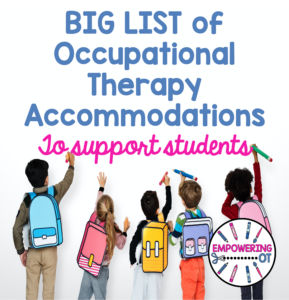
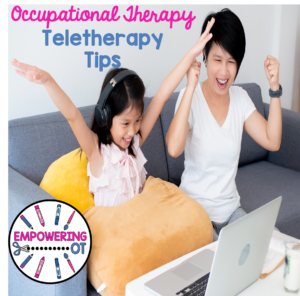
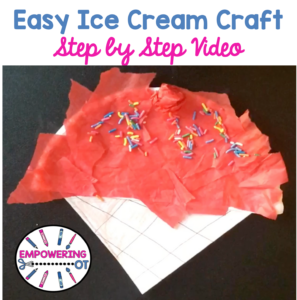

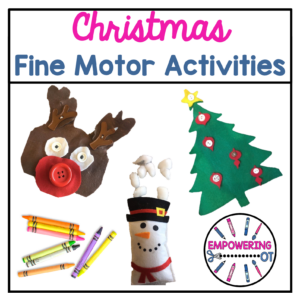
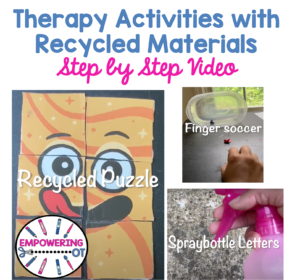
2 Comments